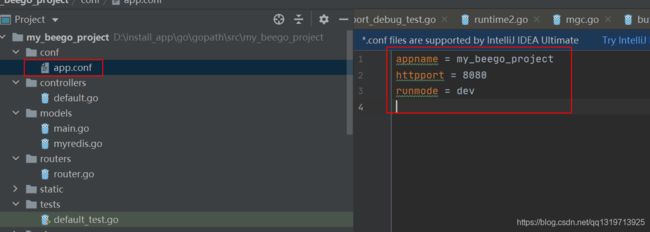- 深入理解 Go 高性能网络框架 nbio
程序员
本文深入探讨了高性能网络框架nbio在Golang中的应用,包括其架构、配置、事件处理机制、核心组件等,并与Evio做了比较。原文:AnalyzingHigh-PerformanceNetworkFrameworknbioinGo前言nbio项目还包括建立在nbio基础上的nbhttp,但这不在我们的讨论范围之内。与evio一样,nbio也采用经典的Reactor模式。事实上,Go中的许多异步网络
- 5分钟搞懂 Golang 堆内存
程序员
本文主要解释了堆内存的概念,介绍了Linux堆内存的工作原理,以及Golang如何管理堆内存。原文:UnderstandingHeapMemoryinLinuxwithGo你想过为什么堆内存被称为"堆"吗?想象一下杂乱堆放的对象,与此类似,在计算机中,堆内存是动态分配和释放内存的空间,通常会导致内存块的无序排列。我们可以利用这种相似性和无序排列来理解堆内存,并探讨堆内存的概念及其在计算中的意义。什
- JS工程化集锦
项目工具模块化JS模块规范CommonJS·AMD·CMD·UMD·ES6NPM版本NPM版本介绍打包构建polyfill工程化篇-JS兼容方案项目管理LintCodeReview效率工具ESLint方案官方:https://cn.eslint.org/docs/user-guide/configuringairbnb:https://github.com/airbnb/javascriptsta
- Golang 生态学习
蚂蚁在飞-
golang人工智能自然语言处理
1.Go语言基础在深入Go语言的生态之前,首先需要掌握Go语言本身的核心特性。•Go语言官方文档:https://golang.org/doc/Go官方文档是学习语言基础和标准库的首选资源。•学习内容:•基础语法:数据类型、控制流、函数、结构体、接口、错误处理等。•并发编程:Go的并发模型(goroutines和channels)是Go的强项,学习并发编程是使用Go的重要步骤。•内存管理:Go的垃
- golang基于gin框架的脚手架开发
少儿频道
Golanggingolang
文章目录仓库地址仓库地址https://gitee.com/wxd_ops/fast_gin.git具体功能见仓库Readme
- Golang编译优化——稀疏条件常量传播
yelvens
Golanggolang
文章目录一、概述1.1常量传播1.2SSCP和SCCP的区别1.3Golang中SCCP不完善点二、稀疏条件常量传播2.1初始化worklist2.2构建def-use链2.3传播constant2.4重写no-constant一、概述1.1常量传播常量传播(constantpropagation)是一种转换,对于给定的关于某个变量xxx和一个常量ccc的赋值x←cx\leftarrowcx←c,
- Golang结合MySQL和DuckDB提高查询性能
梦想画家
#Golang#DuckDBgolangmysqlDuckDB
要在Golang中组合MySQL和DuckDB以提高查询性能,请考虑使用混合查询执行方法。这种方法利用了MySQL强大的事务管理和DuckDB闪电般的分析处理能力。本文介绍如何充分利用两者的方法。各取所长用MySQL处理事务,用DuckDB处理分析MySQL应该处理常规的INSERT、UPDATE和DELETE操作,以应对事务繁重的工作负载。DuckDB是涉及大型数据集的复杂分析查询的理想选择,例
- VYOS容器运行Uptime Kuma监控
GTaylor
Vyosvyos容器UptimeKuma监控系统无处不容器
添加镜像addcontainerimagelouislam/uptime-kumasudomkdir/config/kumasudochmod777/config/kuma配置setcontainernameUptimeKumadescription'Uptime-Kuma'setcontainernameUptimeKumaimage'docker.io/louislam/uptime-kuma
- FreePBX修改IP地址和端口以及添加SSL证书开启HTTPS访问
୧⍢⃝୨ LonelyCoder
CentOSFreePBXmkcerttcp/ipsslhttps
最近给单位部署了freepbx网络电话系统,我的系统是安装在ibmx3650m4物理机上的,iso镜像下载后直接用Rufus烧录到U盘,服务器上先做好了raid1,插上U盘重启服务器开撸。安装过程略过了,在虚拟机上安装就不用那么麻烦。一、修改IP地址:1、修改前,先看看你的网线是插在哪个网卡的,用ifconfig查看哪个网卡在用,lo口除外;2、我用的是eth3网卡,所以下面的以eth3网卡为例,
- Golang学习笔记_28——工厂方法模式(实例)
LuckyLay
Golang学习笔记golang学习笔记工厂方法模式
Golang学习笔记_26——通道Golang学习笔记_27——单例模式Golang学习笔记_28——工厂方法模式工厂方法模式(实例)packagefactory_method_demoimport"fmt"//Order接口,定义订单的基本操作typeOrderinterface{CalculateTotal()float64Display()}//RegularOrder是普通订单结构体typ
- 3.解析logback.xml配置文件入口
uncleqiao
slf4jlogbackslf4j
文章目录一、前言二、源码解析LogbackServiceProviderDefaultJoranConfiguratorJoranConfigurator三、总结一、前言前面介绍了slf4j相关的知识点,提到了实现模块是通过SLF4JServiceProvider进行自定义日志框架的,本节就来介绍logback的LogbackServiceProvider二、源码解析LogbackServiceP
- 5.modelHandler处理model
uncleqiao
slf4jslf4jlogback
文章目录一、前言二、常用modelHandler解析modelconfiguration标签解析property标签解析conversionRule标签解析appender标签解析root标签解析logger标签解析三、总结一、前言前面的文章主要介绍了logback将logback.xml中的节点路径解析成一个个的model,最后在DefaultProcessor中使用modelHandler对m
- aws s3仅允许cloudfront访问_配置跨账户S3存储桶的访问
weixin_39839478
awsawss3查看accesskeysecretkey我们无法刷新此账户的凭据
【Domain1的组织复杂性设计(DesignforOrganizationalComplexity)】——-配置跨账户S3存储桶的访问(CrossAccountS3BucketConfiguration)Hello大家好,欢迎回来,我们今天的课程内容是跨账户S3存储桶的访问。当前,在很多组织中,应用跨账户S3存储桶访问的架构组成是非常普遍的,同样,对于AWSSAP认证考试,掌握跨账户存储桶的访问
- 在VS Code上使用SSH连接腾讯云服务器
Master2023
服务器腾讯云ssh
服务器:1.找到自己用户名,初始用户名一般为root或ubuntu2.必须设置密码,将主机关机后点击重置密码设置新密码,完成后开机本地:1.打开VSCode,安装Remote-SSH插件2.点击左边活动栏新增的远程资源管理器,进入点击右边的设置图标3.选择以.\ssh\config结尾的选项4.打开配置文件后按如下格式进行配置:HostNo.5HostName43.143.190.66Userro
- vue axios 下载 获取文件名 filename 后端返回
失眠的咕噜
vue.jsjavascript前端
constdownloadRow=(row)=>{importConfigApi.downloadTemplate(row.id,'blob').then((res)=>{console.log(res)//letfileName=''letfileName=decodeURI(res.headers['content-disposition'].split(';')[2].split('file
- 【RK3588 docker编译问题】
kaikai_1019
RK3588dockerdocker容器运维
问题集合问题1:编译lunch出现问题12:31:21Buildsandboxingdisabledduetonsjailerror.12:31:22Buildsandboxingdisabledduetonsjailerror.Infileincludedfrombuild/make/core/config.mk:313:Infileincludedfrombuild/make/core/env
- github go star前50的项目
可乐泡枸杞·
githubgolang开发语言开源软件开源
以下是按星标数排序的前50个Go语言的GitHub仓库。1.avelino/awesome-go星标数:126619简介:AcuratedlistofawesomeGoframeworks,librariesandsoftware语言:Go项目Logo:2.golang/go星标数:121848简介:TheGoprogramminglanguage语言:Go项目Logo:3.kubernetes/
- SpringBoot Configuration Annotation Processor not configured 解决方案和详细问题分析以及作用
P7进阶路
面试学习路线阿里巴巴springboot后端java
目录1、问题出现:2、解决方案:?2.1方式一?简单粗暴的禁止提示2.2方式二引入jar包3、问题深入探究写在前:笔者出现这个问题的时候,大概猜到是什么问题,在网上也是很快找到了解决方案,但是很多帖子,并没有深究,只是单纯的解决了问题。1、问题出现:当我们写配置类时就会出现如下的提示,虽然不影响运行,但看着实在碍眼,笔者这个是刚解决了的,为了记录,所以后面才截图,如果是一开始即对应的是后面截图的图
- @SpringBootApplication详解(Spring Boot启动原理)
m0_74823388
面试学习路线阿里巴巴资料职业发展springboot后端java
本文来说下SpringBoot中的自动装配机制。SpringBoot最强大的功能就是把我们常用的场景抽取成了一个个starter(场景启动器),通过SpringBoot为我们提供的这些场景启动器,我们再进行少量的配置就能使用相应的功能。文章目录概述什么是SpringBoot约定优于配置自动装配@SpringBootConfiguration注解@ComponentScan注解@EnableAuto
- springboot3配置日志logback
cq_run
logbackjavaspringboot
当前springboot版本为3.3.4之后版本与之前版本配置不同1.引入依赖org.springframework.bootspring-boot-starter-logging3.3.42.配置文件application.ymllogging:file:name:spring_log.logpath:./logsconfig:classpath:logback-spring.xmlsrc/ma
- CMD批处理命令入门(5)——ping,ipconfig,arp,start,shutdown,taskkill
跑不了的你
Windows驱动开发语言windowsddos
CMD批处理命令入门(5)——ping,ipconfig,arp,start,shutdown,taskkill本章主要内容:测试IP连接:`ping`查看IP配置:`ipconfig`解析地址:`arp`开启命令:`start`关闭或重启计算机:`shutdown`关闭指定进程`taskkill`本章主要内容:测试IP连接:ping查看IP配置:ipconfig解析地址:arp开启命令:star
- 后端开发面试题6(附答案)
来年定当除暴安良
面试面试跳槽后端golang
前言在下首语言是golang,所以会用他作为示例。原文参见@arialdomartini的:Back-EndDeveloperInterviewQuestions分布式系统相关问题1.怎么测试一个分布式系统?测试分布式系统是一项复杂且具有挑战性的任务,因为它涉及到多个组件在不同的网络环境和硬件设施上的协同工作。以下是一些测试分布式系统的关键步骤和方法:单元测试:对分布式系统中的每个独立模块进行单元
- 24.01.17
2401_87910368
java数据库前端
异步使用 @Resource ThreadPoolTaskExecutortaskExecutor;taskExecutor.execute(()->{//业务代码 });开启异步注解@Configuration@MapperScan("com.javasm.mingming.*.dao")@EnableAsync//开启异步任务注解publicclassServerConfig{ @
- 使用kubeadm搭建kubernetes单机master,亲测无异常(1)
2301_76238237
程序员kubernetes容器云原生
sudocat/sys/class/dmi/id/product_uuid//每台机器的uuid不能相同ifconfig-a//ip不能相同2.开放端口|协议|方向|端口范围|作用|使用者||—|—|—|—|—||TCP|入站|6443|KubernetesAPI服务器|所有组件||TCP|入站|2379-2380|etcd服务器客户端API|kube-apiserver,etcd||TCP|入站
- Vue项目打包部署与路由配置深度解析
程序员
在Vue.js项目的开发和部署过程中,配置打包路径和路由模式是两个至关重要的环节。下面,我们将详细探讨如何根据需求将Vue项目打包部署到域名的根路径或二级路径,并深入解析hash路由与history路由的配置方法。一、Vue项目打包部署1.配置vue.config.jsvue.config.js是VueCLI项目的配置文件,用于定制项目构建过程中的各种选项。其中,publicPath属性决定了打包
- 银河麒麟V10 sp3 安装Oracle11g
蓝天4202
oracle笔记oracle
hostnamectlset-hostnamedb01vim/etc/hosts192.168.1.101db01vim/etc/selinux/configSELINUX=disabled2.5关闭防火墙配置systemctldisablefirewalldsystemctlstopfirewalldsystemctlstopfirewalld.servicesystemctldisablefi
- linux二进制包安装svn,linux 安装svn(subversion二进制tar包)
小丑逼
linux二进制包安装svn
#下载subversion安装包,地址:http://subversion.apache.org/download.cgi,我这里是subversion-1.9.7.tar.gz#cd进入你想安装的目录,rz命令上传至服务器tar-xzvfsubversion-1.9.7.tar.gzcdsubversion-1.9.7./configure--prefix=/usr/local/subversi
- linux 搭建https 服务器 (apache)
gpstrive
linux应用apachehttpslinux
一、安装准备1.安装Openssl要使Apache支持SSL,需要首先安装Openssl支持。这里使用的是openssl-0.9.8k.tar.gz下载Openssl:http://www.openssl.org/source/tar-zxfopenssl-0.9.8k.tar.gz//解压安装包cdopenssl-0.9.8k//进入已经解压的安装包./config//配置安装。推荐使用默认配置
- 关于wandb: Network error的问题
Young_Tramp
一些小问题linux
关于wandb:Networkerror的问题我的情况:vscode远程服务器,服务器才重启过,wandb之前一直正常,重启后就出现错误:wandb:Networkerror(ConnectionError),enteringretryloop.wandb:W&BAPIkeyisconfigured.Usewandblogin--relogintoforcereloginwandb:Network
- 如何安装python3.7.4_银河麒麟安装Python3.7.4以及升级自带OpenSSL
weixin_39873191
如何安装python3.7.4
银河麒麟安装Python3.7.4以及升级自带OpenSSL升级OpenSSL1.下载opensslwgethttps://www.openssl.org/source/openssl-1.1.1a.tar.gztar-zxvfopenssl-1.1.1a.tar.gzcdopenssl-1.1.1a2.编译安装./config--prefix=/usr/local/opensslno-zlib#
- jsonp 常用util方法
hw1287789687
jsonpjsonp常用方法jsonp callback
jsonp 常用java方法
(1)以jsonp的形式返回:函数名(json字符串)
/***
* 用于jsonp调用
* @param map : 用于构造json数据
* @param callback : 回调的javascript方法名
* @param filters : <code>SimpleBeanPropertyFilter theFilt
- 多线程场景
alafqq
多线程
0
能不能简单描述一下你在java web开发中需要用到多线程编程的场景?0
对多线程有些了解,但是不太清楚具体的应用场景,能简单说一下你遇到的多线程编程的场景吗?
Java多线程
2012年11月23日 15:41 Young9007 Young9007
4
0 0 4
Comment添加评论关注(2)
3个答案 按时间排序 按投票排序
0
0
最典型的如:
1、
- Maven学习——修改Maven的本地仓库路径
Kai_Ge
maven
安装Maven后我们会在用户目录下发现.m2 文件夹。默认情况下,该文件夹下放置了Maven本地仓库.m2/repository。所有的Maven构件(artifact)都被存储到该仓库中,以方便重用。但是windows用户的操作系统都安装在C盘,把Maven仓库放到C盘是很危险的,为此我们需要修改Maven的本地仓库路径。
- placeholder的浏览器兼容
120153216
placeholder
【前言】
自从html5引入placeholder后,问题就来了,
不支持html5的浏览器也先有这样的效果,
各种兼容,之前考虑,今天测试人员逮住不放,
想了个解决办法,看样子还行,记录一下。
【原理】
不使用placeholder,而是模拟placeholder的效果,
大概就是用focus和focusout效果。
【代码】
<scrip
- debian_用iso文件创建本地apt源
2002wmj
Debian
1.将N个debian-506-amd64-DVD-N.iso存放于本地或其他媒介内,本例是放在本机/iso/目录下
2.创建N个挂载点目录
如下:
debian:~#mkdir –r /media/dvd1
debian:~#mkdir –r /media/dvd2
debian:~#mkdir –r /media/dvd3
….
debian:~#mkdir –r /media
- SQLSERVER耗时最长的SQL
357029540
SQL Server
对于DBA来说,经常要知道存储过程的某些信息:
1. 执行了多少次
2. 执行的执行计划如何
3. 执行的平均读写如何
4. 执行平均需要多少时间
列名 &
- com/genuitec/eclipse/j2eedt/core/J2EEProjectUtil
7454103
eclipse
今天eclipse突然报了com/genuitec/eclipse/j2eedt/core/J2EEProjectUtil 错误,并且工程文件打不开了,在网上找了一下资料,然后按照方法操作了一遍,好了,解决方法如下:
错误提示信息:
An error has occurred.See error log for more details.
Reason:
com/genuitec/
- 用正则删除文本中的html标签
adminjun
javahtml正则表达式去掉html标签
使用文本编辑器录入文章存入数据中的文本是HTML标签格式,由于业务需要对HTML标签进行去除只保留纯净的文本内容,于是乎Java实现自动过滤。
如下:
public static String Html2Text(String inputString) {
String htmlStr = inputString; // 含html标签的字符串
String textSt
- 嵌入式系统设计中常用总线和接口
aijuans
linux 基础
嵌入式系统设计中常用总线和接口
任何一个微处理器都要与一定数量的部件和外围设备连接,但如果将各部件和每一种外围设备都分别用一组线路与CPU直接连接,那么连线
- Java函数调用方式——按值传递
ayaoxinchao
java按值传递对象基础数据类型
Java使用按值传递的函数调用方式,这往往使我感到迷惑。因为在基础数据类型和对象的传递上,我就会纠结于到底是按值传递,还是按引用传递。其实经过学习,Java在任何地方,都一直发挥着按值传递的本色。
首先,让我们看一看基础数据类型是如何按值传递的。
public static void main(String[] args) {
int a = 2;
- ios音量线性下降
bewithme
ios音量
直接上代码吧
//second 几秒内下降为0
- (void)reduceVolume:(int)second {
KGVoicePlayer *player = [KGVoicePlayer defaultPlayer];
if (!_flag) {
_tempVolume = player.volume;
- 与其怨它不如爱它
bijian1013
选择理想职业规划
抱怨工作是年轻人的常态,但爱工作才是积极的心态,与其怨它不如爱它。
一般来说,在公司干了一两年后,不少年轻人容易产生怨言,除了具体的埋怨公司“扭门”,埋怨上司无能以外,也有许多人是因为根本不爱自已的那份工作,工作完全成了谋生的手段,跟自已的性格、专业、爱好都相差甚远。
- 一边时间不够用一边浪费时间
bingyingao
工作时间浪费
一方面感觉时间严重不够用,另一方面又在不停的浪费时间。
每一个周末,晚上熬夜看电影到凌晨一点,早上起不来一直睡到10点钟,10点钟起床,吃饭后玩手机到下午一点。
精神还是很差,下午像一直野鬼在城市里晃荡。
为何不尝试晚上10点钟就睡,早上7点就起,时间完全是一样的,把看电影的时间换到早上,精神好,气色好,一天好状态。
控制让自己周末早睡早起,你就成功了一半。
有多少个工作
- 【Scala八】Scala核心二:隐式转换
bit1129
scala
Implicits work like this: if you call a method on a Scala object, and the Scala compiler does not see a definition for that method in the class definition for that object, the compiler will try to con
- sudoku slover in Haskell (2)
bookjovi
haskellsudoku
继续精简haskell版的sudoku程序,稍微改了一下,这次用了8行,同时性能也提高了很多,对每个空格的所有解不是通过尝试算出来的,而是直接得出。
board = [0,3,4,1,7,0,5,0,0,
0,6,0,0,0,8,3,0,1,
7,0,0,3,0,0,0,0,6,
5,0,0,6,4,0,8,0,7,
- Java-Collections Framework学习与总结-HashSet和LinkedHashSet
BrokenDreams
linkedhashset
本篇总结一下两个常用的集合类HashSet和LinkedHashSet。
它们都实现了相同接口java.util.Set。Set表示一种元素无序且不可重复的集合;之前总结过的java.util.List表示一种元素可重复且有序
- 读《研磨设计模式》-代码笔记-备忘录模式-Memento
bylijinnan
java设计模式
声明: 本文只为方便我个人查阅和理解,详细的分析以及源代码请移步 原作者的博客http://chjavach.iteye.com/
import java.util.ArrayList;
import java.util.List;
/*
* 备忘录模式的功能是,在不破坏封装性的前提下,捕获一个对象的内部状态,并在对象之外保存这个状态,为以后的状态恢复作“备忘”
- 《RAW格式照片处理专业技法》笔记
cherishLC
PS
注意,这不是教程!仅记录楼主之前不太了解的
一、色彩(空间)管理
作者建议采用ProRGB(色域最广),但camera raw中设为ProRGB,而PS中则在ProRGB的基础上,将gamma值设为了1.8(更符合人眼)
注意:bridge、camera raw怎么设置显示、输出的颜色都是正确的(会读取文件内的颜色配置文件),但用PS输出jpg文件时,必须先用Edit->conv
- 使用 Git 下载 Spring 源码 编译 for Eclipse
crabdave
eclipse
使用 Git 下载 Spring 源码 编译 for Eclipse
1、安装gradle,下载 http://www.gradle.org/downloads
配置环境变量GRADLE_HOME,配置PATH %GRADLE_HOME%/bin,cmd,gradle -v
2、spring4 用jdk8 下载 https://jdk8.java.
- mysql连接拒绝问题
daizj
mysql登录权限
mysql中在其它机器连接mysql服务器时报错问题汇总
一、[running]
[email protected]:~$mysql -uroot -h 192.168.9.108 -p //带-p参数,在下一步进行密码输入
Enter password: //无字符串输入
ERROR 1045 (28000): Access
- Google Chrome 为何打压 H.264
dsjt
applehtml5chromeGoogle
Google 今天在 Chromium 官方博客宣布由于 H.264 编解码器并非开放标准,Chrome 将在几个月后正式停止对 H.264 视频解码的支持,全面采用开放的 WebM 和 Theora 格式。
Google 在博客上表示,自从 WebM 视频编解码器推出以后,在性能、厂商支持以及独立性方面已经取得了很大的进步,为了与 Chromium 现有支持的編解码器保持一致,Chrome
- yii 获取控制器名 和方法名
dcj3sjt126com
yiiframework
1. 获取控制器名
在控制器中获取控制器名: $name = $this->getId();
在视图中获取控制器名: $name = Yii::app()->controller->id;
2. 获取动作名
在控制器beforeAction()回调函数中获取动作名: $name =
- Android知识总结(二)
come_for_dream
android
明天要考试了,速速总结如下
1、Activity的启动模式
standard:每次调用Activity的时候都创建一个(可以有多个相同的实例,也允许多个相同Activity叠加。)
singleTop:可以有多个实例,但是不允许多个相同Activity叠加。即,如果Ac
- 高洛峰收徒第二期:寻找未来的“技术大牛” ——折腾一年,奖励20万元
gcq511120594
工作项目管理
高洛峰,兄弟连IT教育合伙人、猿代码创始人、PHP培训第一人、《细说PHP》作者、软件开发工程师、《IT峰播》主创人、PHP讲师的鼻祖!
首期现在的进程刚刚过半,徒弟们真的很棒,人品都没的说,团结互助,学习刻苦,工作认真积极,灵活上进。我几乎会把他们全部留下来,现在已有一多半安排了实际的工作,并取得了很好的成绩。等他们出徒之日,凭他们的能力一定能够拿到高薪,而且我还承诺过一个徒弟,当他拿到大学毕
- linux expect
heipark
expect
1. 创建、编辑文件go.sh
#!/usr/bin/expect
spawn sudo su admin
expect "*password*" { send "13456\r\n" }
interact
2. 设置权限
chmod u+x go.sh 3.
- Spring4.1新特性——静态资源处理增强
jinnianshilongnian
spring 4.1
目录
Spring4.1新特性——综述
Spring4.1新特性——Spring核心部分及其他
Spring4.1新特性——Spring缓存框架增强
Spring4.1新特性——异步调用和事件机制的异常处理
Spring4.1新特性——数据库集成测试脚本初始化
Spring4.1新特性——Spring MVC增强
Spring4.1新特性——页面自动化测试框架Spring MVC T
- idea ubuntuxia 乱码
liyonghui160com
1.首先需要在windows字体目录下或者其它地方找到simsun.ttf 这个 字体文件。
2.在ubuntu 下可以执行下面操作安装该字体:
sudo mkdir /usr/share/fonts/truetype/simsun
sudo cp simsun.ttf /usr/share/fonts/truetype/simsun
fc-cache -f -v
- 改良程序的11技巧
pda158
技巧
有很多理由都能说明为什么我们应该写出清晰、可读性好的程序。最重要的一点,程序你只写一次,但以后会无数次的阅读。当你第二天回头来看你的代码 时,你就要开始阅读它了。当你把代码拿给其他人看时,他必须阅读你的代码。因此,在编写时多花一点时间,你会在阅读它时节省大量的时间。
让我们看一些基本的编程技巧:
尽量保持方法简短
永远永远不要把同一个变量用于多个不同的
- 300个涵盖IT各方面的免费资源(下)——工作与学习篇
shoothao
创业免费资源学习课程远程工作
工作与生产效率:
A. 背景声音
Noisli:背景噪音与颜色生成器。
Noizio:环境声均衡器。
Defonic:世界上任何的声响都可混合成美丽的旋律。
Designers.mx:设计者为设计者所准备的播放列表。
Coffitivity:这里的声音就像咖啡馆里放的一样。
B. 避免注意力分散
Self Co
- 深入浅出RPC
uule
rpc
深入浅出RPC-浅出篇
深入浅出RPC-深入篇
RPC
Remote Procedure Call Protocol
远程过程调用协议
它是一种通过网络从远程计算机程序上请求服务,而不需要了解底层网络技术的协议。RPC协议假定某些传输协议的存在,如TCP或UDP,为通信程序之间携带信息数据。在OSI网络通信模型中,RPC跨越了传输层和应用层。RPC使得开发
